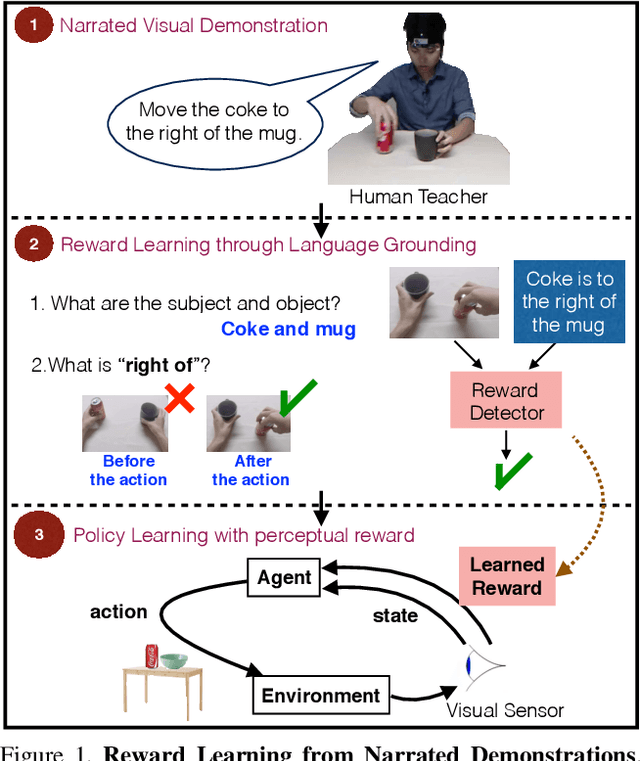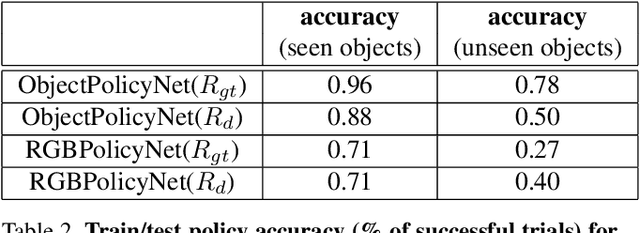Reward Learning from Narrated Demonstrations
Paper and Code
Apr 27, 2018



Humans effortlessly "program" one another by communicating goals and desires in natural language. In contrast, humans program robotic behaviours by indicating desired object locations and poses to be achieved, by providing RGB images of goal configurations, or supplying a demonstration to be imitated. None of these methods generalize across environment variations, and they convey the goal in awkward technical terms. This work proposes joint learning of natural language grounding and instructable behavioural policies reinforced by perceptual detectors of natural language expressions, grounded to the sensory inputs of the robotic agent. Our supervision is narrated visual demonstrations(NVD), which are visual demonstrations paired with verbal narration (as opposed to being silent). We introduce a dataset of NVD where teachers perform activities while describing them in detail. We map the teachers' descriptions to perceptual reward detectors, and use them to train corresponding behavioural policies in simulation.We empirically show that our instructable agents (i) learn visual reward detectors using a small number of examples by exploiting hard negative mined configurations from demonstration dynamics, (ii) develop pick-and place policies using learned visual reward detectors, (iii) benefit from object-factorized state representations that mimic the syntactic structure of natural language goal expressions, and (iv) can execute behaviours that involve novel objects in novel locations at test time, instructed by natural language.
 Add to Chrome
Add to Chrome Add to Firefox
Add to Firefox Add to Edge
Add to Edge